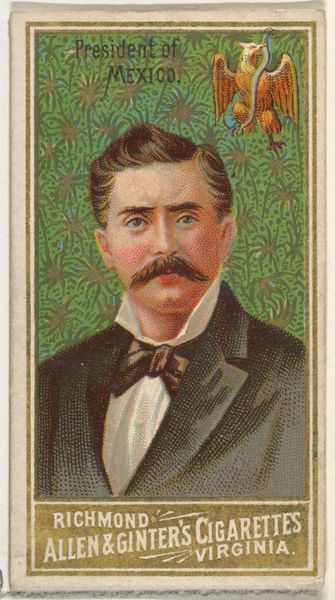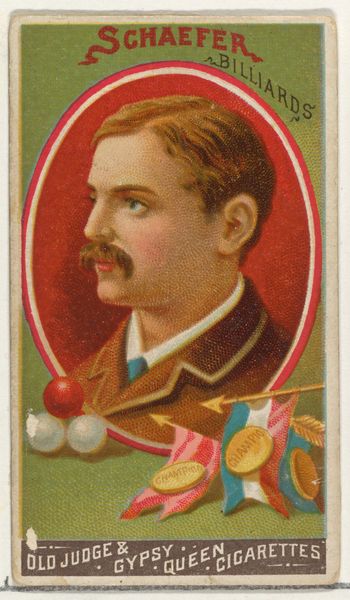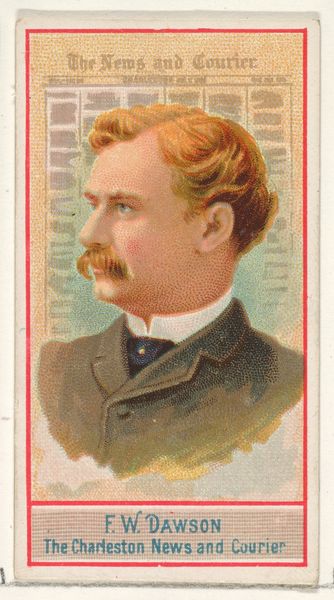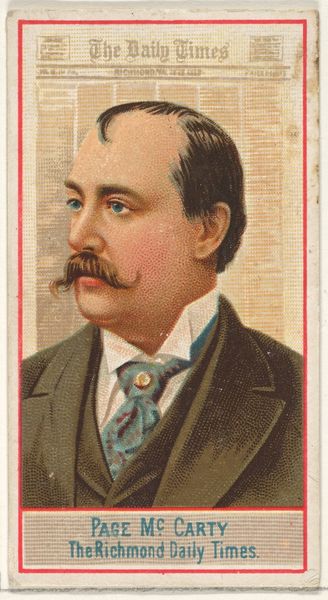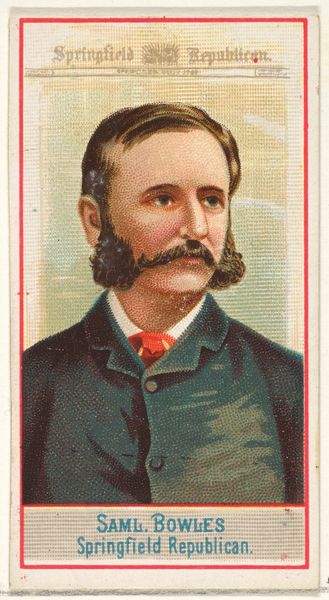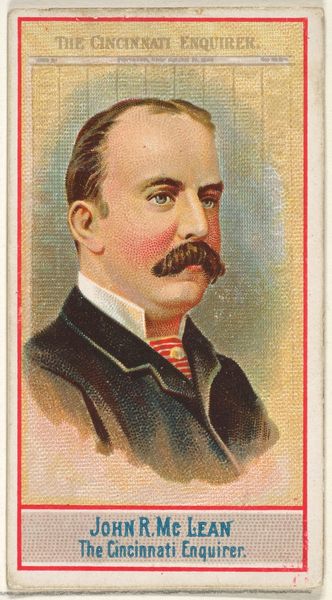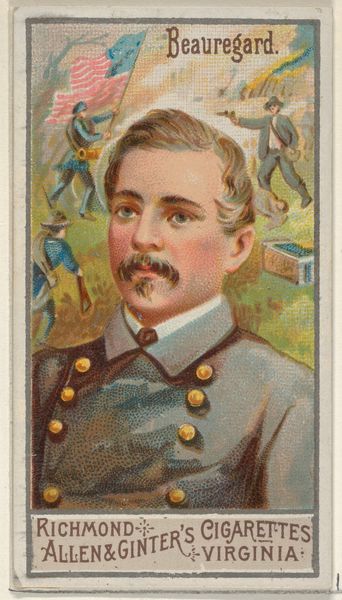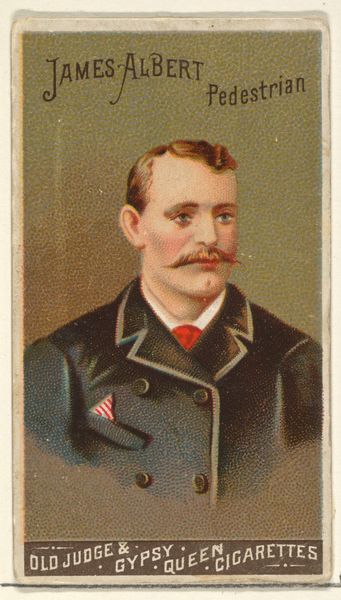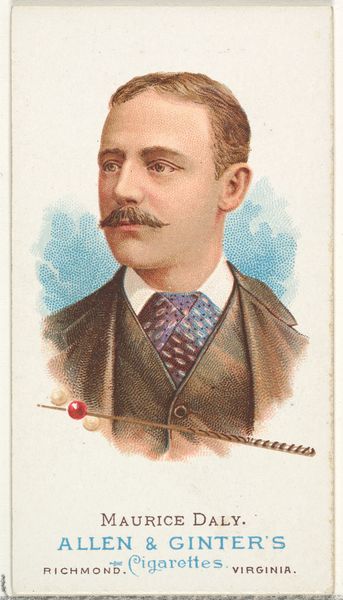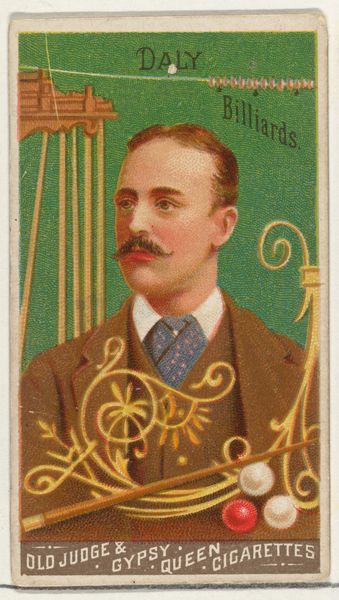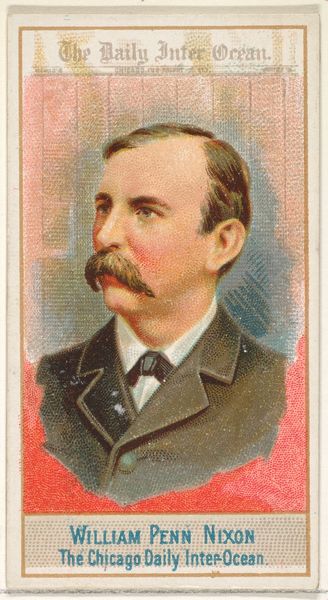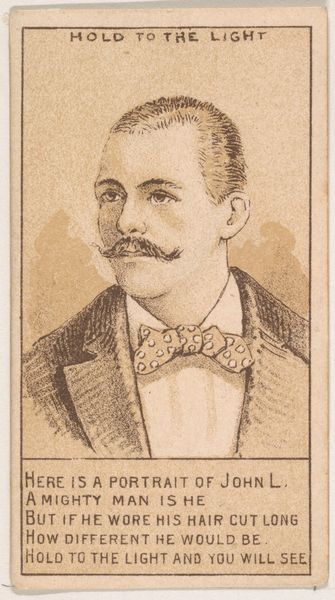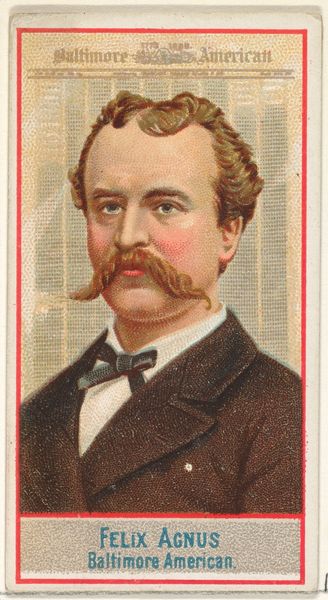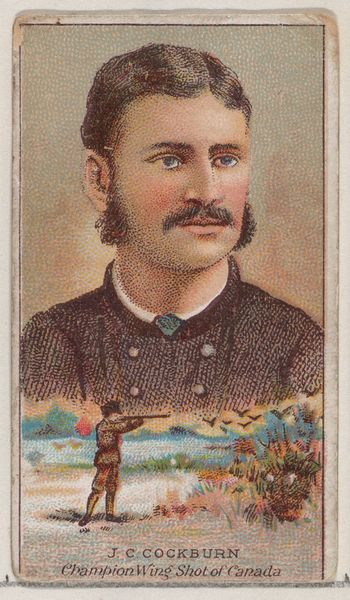
George Slosson, Billiards, from the Goodwin Champion series for Old Judge and Gypsy Queen Cigarettes 1888
0:00
0:00
drawing, graphic-art, print
#
portrait
#
drawing
#
graphic-art
# print
#
impressionism
#
caricature
#
caricature
#
academic-art
Dimensions: sheet: 2 5/8 x 1 1/2 in. (6.6 x 3.8 cm)
Copyright: Public Domain
Editor: Here we have "George Slosson, Billiards, from the Goodwin Champion series for Old Judge and Gypsy Queen Cigarettes," produced around 1888 by Goodwin & Company. It's a print, part drawing, part graphic art. I find it interesting because it feels like a piece of advertising masquerading as a portrait. What can you tell me about this from your perspective? Curator: This piece strikes me as a fascinating intersection of industry, sport, and celebrity. These trade cards, essentially advertisements, weren’t just passively received. The paper itself, its production, the ink used, the printing process – all of that was rapidly evolving due to industrial advancements and fueled a new kind of visual culture. The portrait isn’t really the point here, right? Editor: I see what you mean. It's not like fine art, made for a gallery. So, you are suggesting it's more about the context in which it was made and circulated? Curator: Precisely. Consider how these cards, printed en masse and included in cigarette packs, democratized access to imagery, and therefore knowledge and aspiration, regardless of class. What does that mass-produced image *do* to conceptions of portraiture and the very *nature* of art? This card is an object manufactured to promote both a particular billiard player, but primarily consumption: the cigarettes themselves. Editor: That's really interesting. So, you’re saying that we should consider the socioeconomic factors? Curator: Yes, what do we make of the labor behind both the image, the production, and its circulation? This object, so easily dismissed as "just" an advertisement, reveals complex power dynamics within its materiality and consumption. These seemingly simple drawings participated in, and actively shaped, the world in a real way. Editor: This really gives me a new way to see advertising, or things that I would consider of lesser artistic value. Curator: Absolutely! It's about looking beyond the surface and seeing art as an object embedded within a web of social and material relations. It invites us to be thoughtful.
Comments
No comments
Be the first to comment and join the conversation on the ultimate creative platform.
